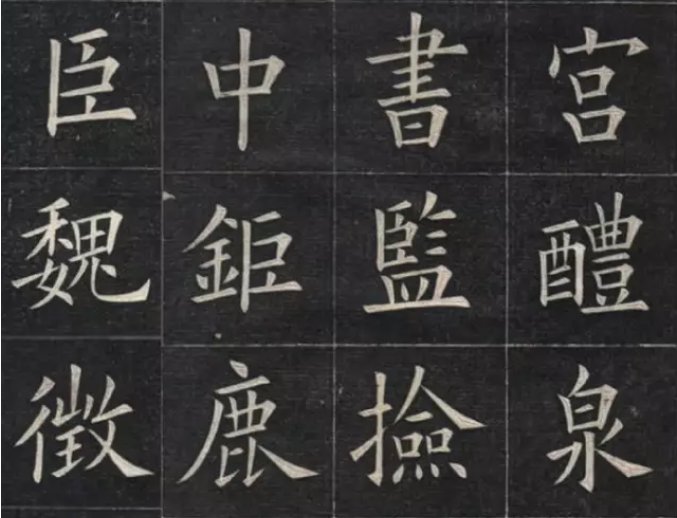When learning small regular script calligraphy for the first time, everyone knows that you need to choose a good copybook, so what is a good copybook? How to choose a copybook that suits you?

First, you have to look at it. This step is not easy, because it tests your vision and requires you to have a certain knowledge of calligraphy aesthetics. What to do if you don’t have aesthetics? Now that you are learning the introductory theory, you must be ready to learn calligraphy. It is necessary to have some common knowledge of calligraphy. The introductory theory is to ask more and read more. Modern information is so developed that you can easily search the Internet to find a lot. But you should pay attention to screening, and you can also ask your trustworthy senior calligrapher friends.
Second, it must be spread over a long period of time. There are not many good small-script calligraphy books circulated today, especially ink calligraphy. Then someone said that there are tens of thousands of small regular script ink marks in Dunhuang, how could there be so few? Because most of the Dunhuang Tibetan scriptures are written by folk, there are very few that can be used as learning models, especially for beginners. Even if there are excellent manuscripts, there are no popular versions. As far as I know, the Forbidden City in Beijing collects the Chinese interpretation of "Law of Good Views", the China Bookstore collects the Sui Sutra "Dabao Sutra", the Liaoning Museum collects the Sutra written by Shen Hong in the second year of Longshuo, and the National Library collects "King Kong" written by Liu Honggui in the first year of Yifeng. "Sutra" and so on, there are almost no high-quality popular printed editions in the world, and some editions priced at nearly 2,000 yuan are still poorly printed. The previous generation of small regular scripts that have been around for a long time and have been recognized by the public are almost all printed copies. Let the Japanese print "Jin and Tang Xiaokai Selection" printed by Ergensha, and all the Chinese people are reprinting this book, which makes people feel guilty and angry. What is even more shameful is that the forty-three lines of high-definition inkblots on the "Ling Fei Sutra" that are popular all over the world are also high-definition capillary-level electronic images released for free by the Metropolitan Museum of Art in the United States. Major libraries in the country possess the above-mentioned fine volumes that have been handed down from generation to generation, but none of them have benefited the public. Isn’t it strange?
Third, it must be well-printed. Nowadays, there are countless calligraphy copies printed, but most of them are homogeneous. It is not impossible that a dozen versions can be printed from one plate, and there are many shoddy ones. There are those who enlarge, there are those who are anti-black, and there are those who copy PS. There are all kinds of them, and they are confusing and confusing, but they do not pay attention to the printing quality and fine correction. Therefore, when choosing copybooks, you should keep your eyes open and choose ones with excellent printing. Get started.
If you want to practice calligraphy, take action now and follow the above method to choose a copybook that suits you!








